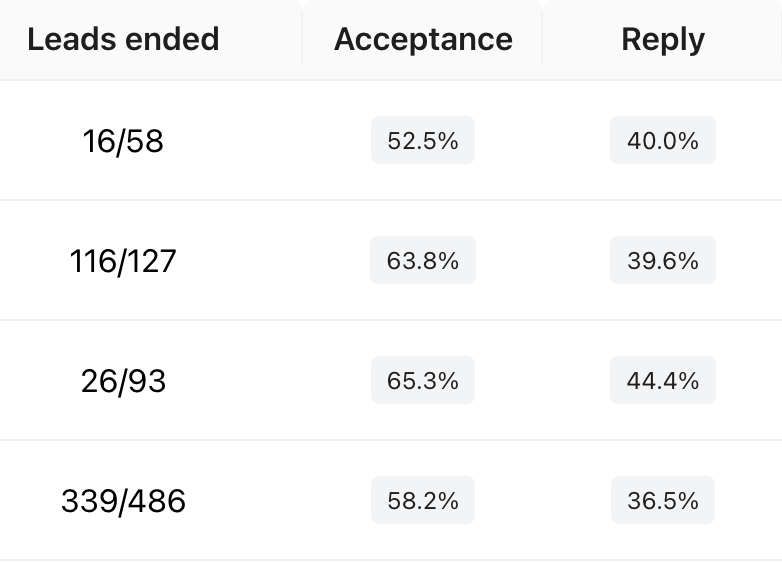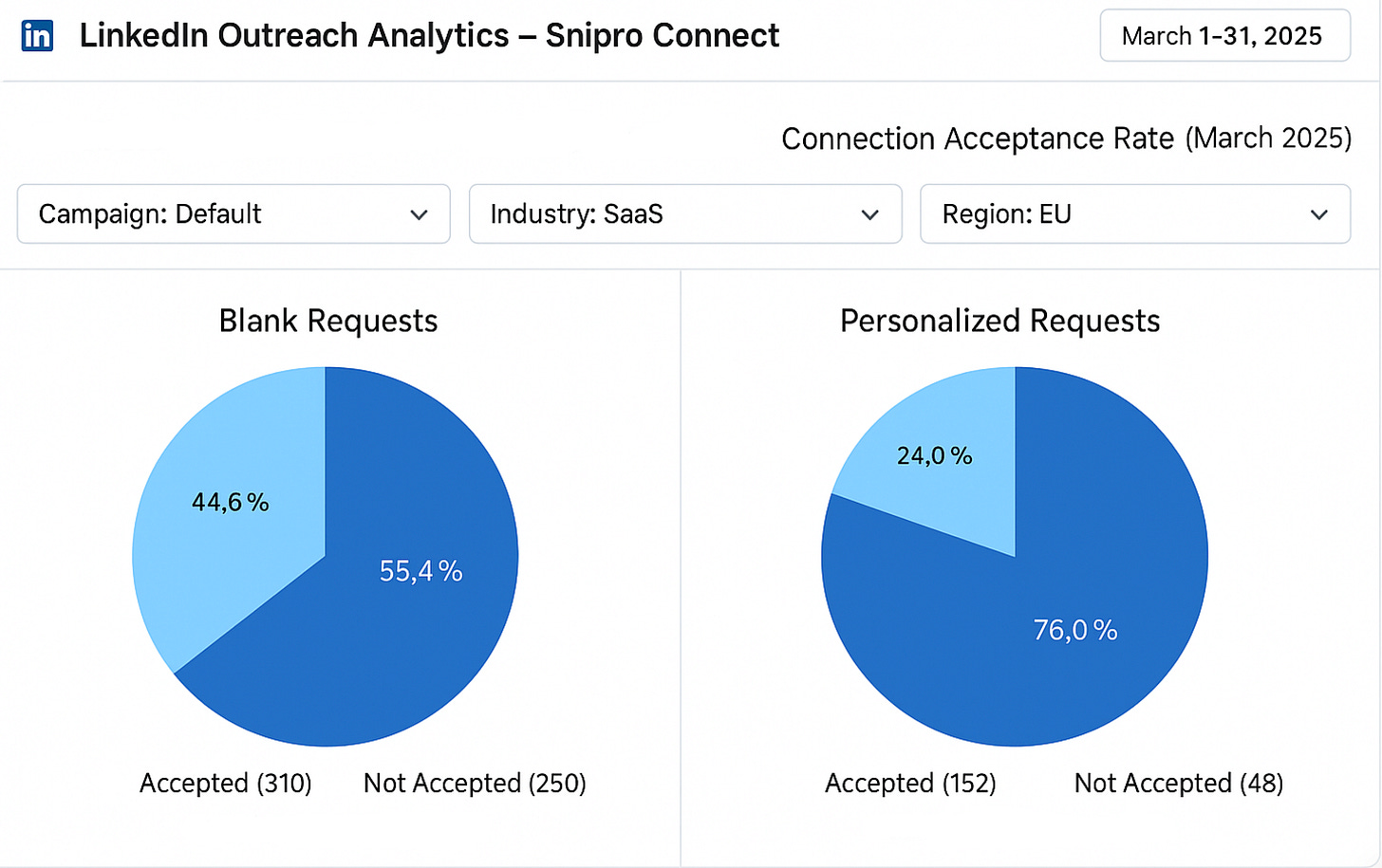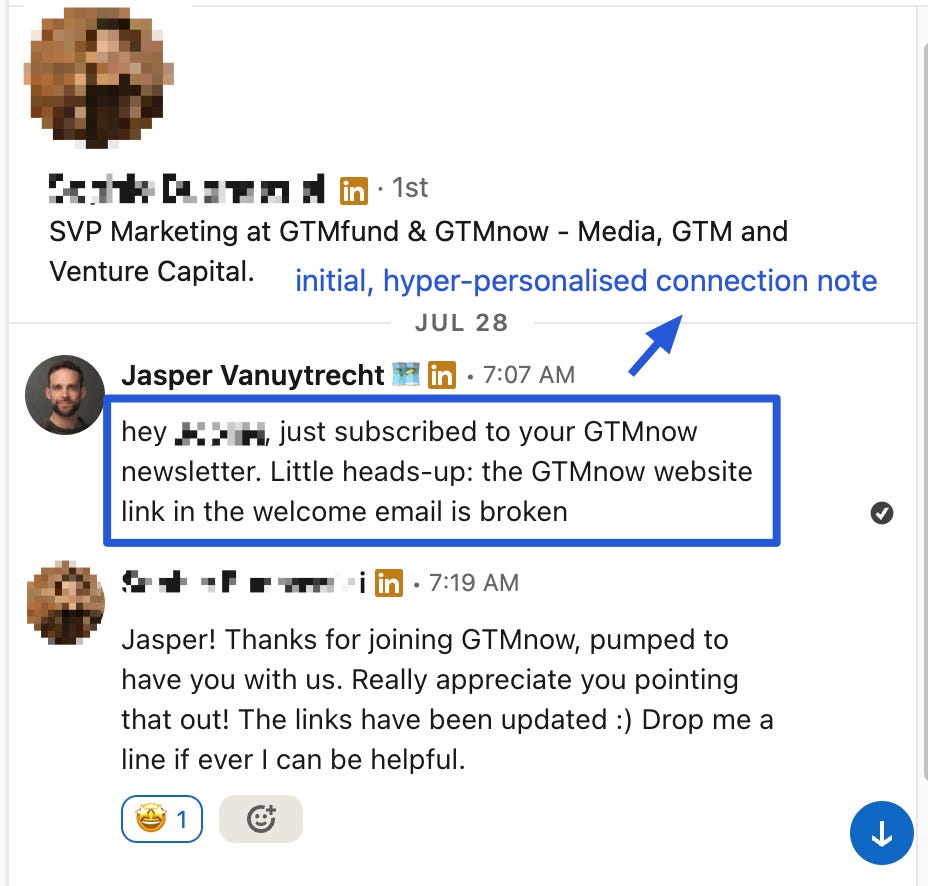Welcome back to the Founder’s GTM, with lean strategies for business owners to win clients predictably.
If you’ve been executing the previous edition’s LinkedIn playbook, you’ve built a steady stream of leads by pulling live signals like post engagement, “Actively Hiring” badges, and competitor connections.
Your list is now full of intent leads already showing interest in a solution like yours.
Now comes the part many founders fumble: turning those leads into connections.
The problem: overcomplicating connection
The default move on LinkedIn is to fire off connection notes that try way too hard to prove “personalisation.”
Every person writing “Saw you liked…” or “We’re both in…” is broadcasting the same subtext: I’m about to sell you something.
The more fluff they add, the less authentic the message feels. And when 70% of requests go ignored, they have no idea why.
Worse, most think they can compensate for a weak profile with clever copy. But no line of text can fix weak positioning.
If your headline says you’re “helping people do X or Y,” you’ve already lost half their attention. Helping is what people in B2B say when they’re selling but don’t want to admit it.
You’re not a charity. You’re a business. Say what you do, who it’s for, and why it matters plain and clear. Clarity sells. “Helping” hides.
When your profile communicates outcome, who you do it for, and proof of value, blank connection requests convert. No clever notes or fake familiarity, but relevance that speaks for itself.
Visibility before familiarity
Before anyone accepts your request, they make one quick subconscious calculation: Do I recognise this name or face? And if not, can this connection add any value?
If the answer is no twice, even the sharpest note disappears in the LinkedIn void.
If the answer is yes, they’ll click Accept without thinking.
Liking posts and visiting profiles can be perfectly automated. Drop a quick comment if you’re doing it manually. Both keep your name in their mind before you ever send a request.
Just stay away from dumb automated AI comments. Nothing kills credibility faster than fake curiosity.
Follow-first OR connect direct
There are two proactive connection paths that consistently perform. Everything else is wasted motion.
1. Indirect: Follow first
Following a lead triggers a notification and often prompts them to check your profile. If your list is well-targeted, many will shoot you a connection request themselves, giving you an inbound connection from a qualified prospect.
When that happens, give them an extra tag of your high-intent list in Sales Navigator.
This works best for new signals or cold profiles. Nice bonus: you save your connection quota for warmer targets.
2. Direct: Send the request
This is the default move, best used when the lead is already well-qualified: strong fit, strong signals.
But keep this rule non-negotiable: blank request > generic personalisation.
Well-targeted blank requests mostly hit 50%+ acceptance rates. You can perfectly automate this action.
Fake “personalised” notes referencing job titles or shared industries usually underperform.
The only exception is hyper-specific relevance, like referencing their post, a comment they made on another post or something off LinkedIn. This must be manual unless you trust your AI prompt with your life.
Execution that separates pros from spammers
Once your system is on point, scale it without letting precision slip:
Use automation tools (Expandi, HeyReach) to scale both following and connection requests safely.
Withdraw unaccepted requests after two weeks in LinkedIn’s invitation manager to keep your acceptance ratio clean. LinkedIn tracks that metric obsessively. Most automation tools will do this for you.
Prioritise ICP alignment over quantity. 200 high-fit connections beat 1,000 irrelevant ones that never engage.
A strong profile + targeted leads = a consistent flow of new connections. Either go blank or hyper-specific. Nothing in between.
Takeaway: stop chasing connection and start earning recognition
The goal isn’t to convince someone to connect. You want to make the decision feel inevitable.
When your name already rings familiar, the “Accept” click is reflexive instead of evaluative.
Connection requests don’t need to charm but resonate.
When your profile headline says something real: what you do, what outcome you drive, and why it matters, people will click “Accept” without hesitation.
Next up: turning connections into opportunities
You’ve earned the connection. Now you need to turn that passive acceptance into active interest.
The next edition shows you how to start conversations that actually go somewhere, using short, insight-led DMs that trigger curiosity and open real deal flow.
This is where your LinkedIn inbox stops feeling like noise and starts behaving like a pipeline.
Stay tuned,
Jasper
⚡ Want help building your follow + connect system? —> claim your outbound optimiser. I’ll review your profile, lead list, and connection flow. Then show you exactly how to automate blank requests that convert.
♻️ If this helped, share it with a founder still writing “personalised” LinkedIn notes from 2022.





